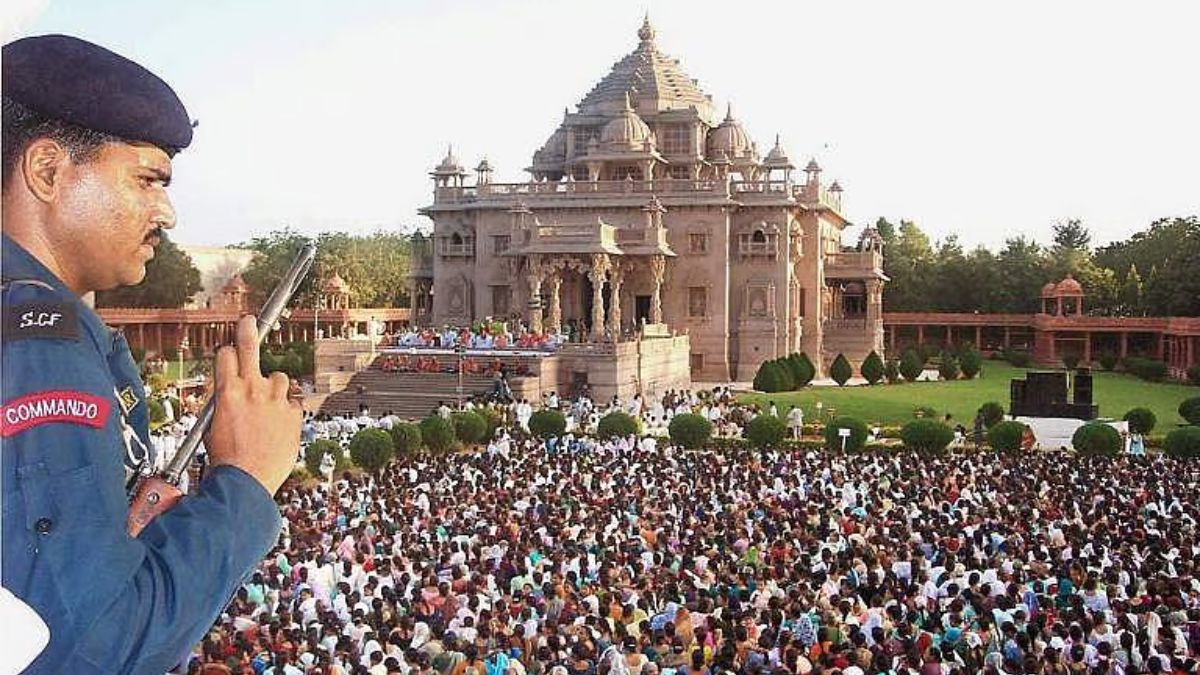It was September 24, 2002, when India watched in horror as terrorists attacked the Akshardham Temple in Gujarat’s Gandhinagar. As many as 33 people lost their lives, while 80 others were injured in the brutal attacks.
If you are a history geek who loves to learn about important events from the past, Firstpost Explainers’ ongoing series, History Today will be your one-stop destination to explore key events.
On this day in 1869, the United States witnessed ‘Black Friday’, one of the most famous financial crises in its history. Far from the other famous ‘Black Friday’ pertaining to heavy discounts, this one was about a disastrous collapse in the gold market that shook the nation’s economy.
Here is all that happened on this day.
Terrorists opened fire at the Akshardham Temple
One of the most serene temples in India, the Akshardham Temple in Gandhinagar, Gujarat, was attacked by two armed terrorists on this day in 2002.
Armed with automatic weapons and grenades, the attackers indiscriminately opened fire on devotees and staff inside the temple complex. Panic spread quickly as people tried to take cover. By the time the siege ended, 33 people had lost their lives, and more than 80 were injured. The incident left the nation horrified, as the sanctity of a place of worship had been shattered.
Security forces responded swiftly, with the National Security Guard (NSG) commandos flown in from Delhi to handle the situation. The operation to neutralise the terrorists lasted nearly 12 hours. After a prolonged gun battle, both assailants were killed, bringing the siege to an end.
Investigations later revealed that the attackers belonged to a Pakistan-based extremist group, aiming to incite communal tensions and destabilise peace in Gujarat. The state at the time was still reeling from the violence created during the Godhra riots from earlier that year. The attack drew widespread condemnation across India and abroad, with leaders emphasising the need for unity and resilience in the face of terrorism.
Following the attack, Gujarat and the central government tightened security at religious sites nationwide. The Akshardham Temple complex was rebuilt and reopened, continuing to serve as a symbol of peace, faith, and resilience.
‘Black Friday’ crash took place in the US
The United States witnessed one of the most infamous financial crises in its history, now remembered as ‘Black Friday.’ It was a collapse in the gold market, orchestrated by two notorious financiers.
The panic was triggered by the schemes of Jay Gould and James Fisk, two powerful Wall Street financiers. They sought to corner the gold market by buying massive quantities of the metal, hoping to drive up its price and sell at enormous profit. Their plan initially worked, sending gold prices soaring and creating turmoil across commodity markets.
However, President Ulysses S Grant’s administration soon became suspicious of the manipulation. To break the speculative bubble, the US Treasury intervened by releasing a large amount of government-held gold into the market. This sudden move caused prices to plummet within hours.
On September 24, gold prices crashed from around $160 (Rs 13,300) per ounce to nearly $133 (Rs 11,000), wiping out fortunes overnight. Investors who had poured money into gold lost everything, while businesses tied to exports and imports also suffered heavy damage due to fluctuating currency values. Farmers, in particular, were hit hard because grain prices collapsed as a result of the instability.
The scandal exposed the deep connections between politics, finance, and corruption in post-Civil War America. Gould and Fisk managed to avoid serious punishment, but their reputations were forever tainted. Meanwhile, thousands of ordinary investors bore the brunt of the collapse, fuelling anger and distrust toward Wall Street elites.
This Day, That Year
On this day in 1993, Norodom Sihanouk was crowned king of Cambodia for the second time.
In 1960, the first nuclear-powered aircraft carrier was launched by the United States.
With inputs from agencies
)